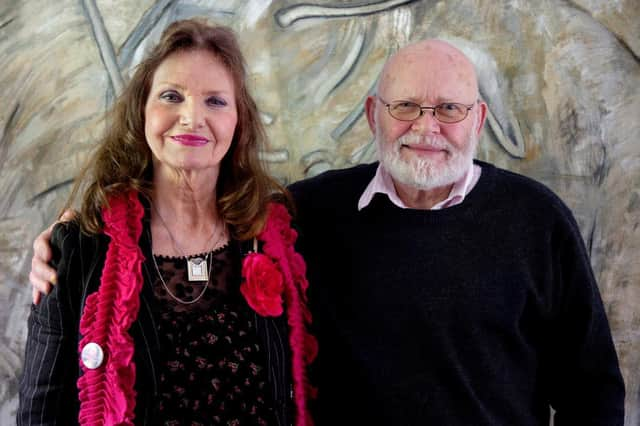Scotsman Obituaries: George Sutherland, Scottish teacher and educationist


When George Bonar Sutherland was born, the Second War World was two years’ distant, but the world already bore the scars of a previous conflict that had extended its long shadow into Scotland in the 1930s; poverty and deprivation were rife; the welfare state not even a gleam in William Beveridge’s eye and the education system meant that for people without means, tertiary (and indeed much of secondary education) was an unattainable dream.
Those without means included Sutherland’s parents, Annie Bonar and Alexander Sutherland; his mother worked as a nurse and ‘in service’ while his father had been apprenticed to a firm of decorators in Portobello. They had met under the grim shadow of war and suffering at Craiglockhart Hospital in Edinburgh; Annie was tending the war wounded, whose number included Siegfried Sassoon and Wilfred Owen, and Sandy was repainting parts of the building. They married in 1932 and their first son was born in Elsie Inglis Hospital, not far from their home in Dalgety Avenue, near Meadowbank. It was a street of solid sandstone tenements, completed around 1890, one of many, intended to house the city’s burgeoning population of artisans and tradesmen.
Advertisement
Hide AdAdvertisement
Hide AdFrom here Sutherland attended school, first at Abbeyhill Primary, and later, Holy Cross Academy on Ferry Road (the later involved a tram journey across the eastern part of the city). Holy Cross was one of two state-funded Catholic secondary schools in the city. Despite early signs of academic brilliance, Sutherland was denied a place at George Heriot’s School, which resulted in Annie marching up to the establishment to demand an explanation; bigotry was suspected but never proven.
After Holy Cross, Sutherland attended Edinburgh University where he studied law, classics, history and English. The student milieu was socially limiting, although by that time, in the late 1950s and early 1960s, Edinburgh could boast the likes of the Laigh Coffee House (owned and restored by the actor Moultrie Kelsall) the Grail coffee-and-bookshop, the Traverse Theatre and the Paperback Bookshop set up by Jim Haynes in a prime position on Charles Street, within the university precincts. All of these provided opportunities to socialise and absorb the rapidly changing intellectual ambience in the city.
Through his mother, Sutherland found himself being employed by Sir Compton Mackenzie (who at that time lived in Drummond Place) as secretary and librarian – a job which he relished and which brought him into contact with luminaries such as James Robertson Justice and Eric Linklater. On Mackenzie’s recommendation Sutherland found a position with Ifan Kyrle Fletcher, an antiquarian book dealer specialising in theatre, whose shop was located in Buckingham Gate, near the Palace. The job was interesting but badly paid so with a new wife (the painter, Lys Hansen, to whom he was married in 1962 by Father Anthony Ross) and a baby to support, the lure of Scotland again became irresistible. Settling in the hamlet of Blairlogie, adjacent to the newly established Stirling University, Sutherland worked in local schools in Alloa and at Grangemouth High School. Moray Middle School and Abbotsgrange Middle School, the only ‘middle schools’ to be established in Scotland became the subject of his M.Ed. thesis (‘The Grangemouth Plan’) completed at Stirling University in 1980. His passion for education was idealist and motivated partly by the privations endured by his parents’ and previous generations.
In the early 1980s Sutherland was headhunted and selected from many principal teachers of English to work for the Government Schools Inspectorate as a Field Development Officer to help develop new ‘Standard Grade’ courses in English at Foundation, General and Credit levels. He visited and assisted thirty schools throughout Scotland that were trialling these courses. They were eventually introduced as Standard Grades, Highers and Advanced Highers. He then worked for the Scottish Examination Board (later the Scottish Qualifications Authority) as an Examination Officer, setting up teams of educationists to write and mark the exams. In the early days of Standard Grade, Scotland led the world by having courses designed to suit pupils’ abilities and to offer recognition for achievement, no matter at what level. As part of SEB initiatives to ‘spread the word’ Sutherland also participated in consultative trips abroad to Lithuania and Latvia.
In Blairlogie, Sutherland was keenly involved in village life and in the wider community. With Lys Hansen he helped to establish the Crowsteps annual art exhibition, which attracted the work of professional artists from across Scotland. He was involved several conservation campaigns, including one to save the buildings of architect George Alexander Kerr (1865-1927). He also worked with the gallerist and photographer Angus Ogilvy (1945-1989) on two illustrated volumes of poetry Birds: an anthology of new poems (1977) and Trees: An Anthology (1975), which were published by the Stirling Gallery, Ogilvy’s ambitious project in Broad Street, which led the way in efforts to reinvigorate that neglected area of Stirling, near the castle.
Further afield, during the 1980s, Sutherland was a regular lecturer at the annual British Council summer school at Aberdeen University for foreign teachers of English; he was a popular and enthusiastic contributor, turning up in his beloved Triumph Spitfire to help organise social, as well as academic, activity. During the 1990s along with David Harding of Glasgow School of Art, and others, Sutherland worked as a member of the Scottish Sculpture Trust, which sought to introduce new and innovative public art projects into Scottish urban and rural environments.
Sutherland had strong family values and was greatly supportive of his wife and his two sons, Giles and Marcus, by whom he is survived.
Sutherland died peacefully in hospital after a long period of ill-health that included pulmonary fibrosis and Alzheimer’s Disease.
OBITUARIES
Advertisement
Hide AdAdvertisement
Hide AdIf you would like to submit an obituary (800-1000 words preferred, with jpeg image), or have a suggestion for a subject, contact [email protected]
SUBSCRIBE
Subscribe at www.scotsman.com/subscriptions
